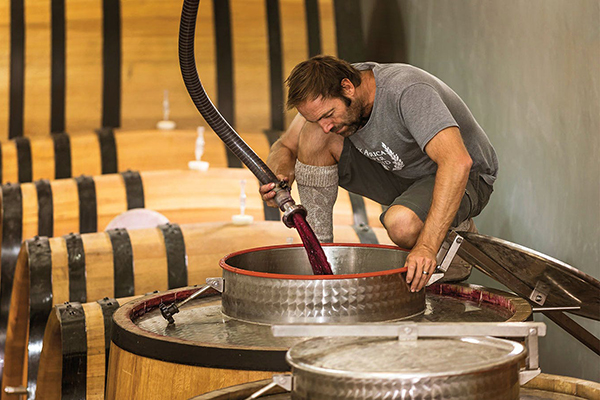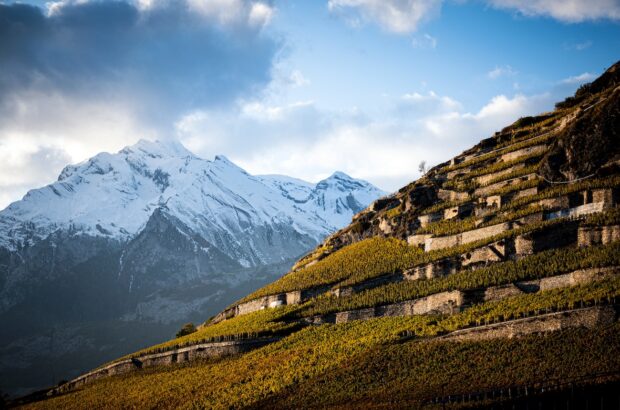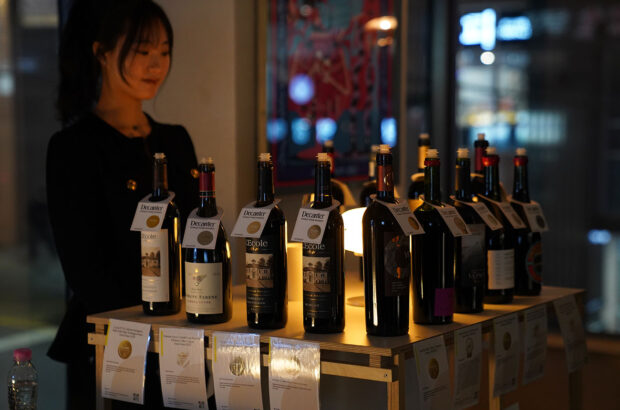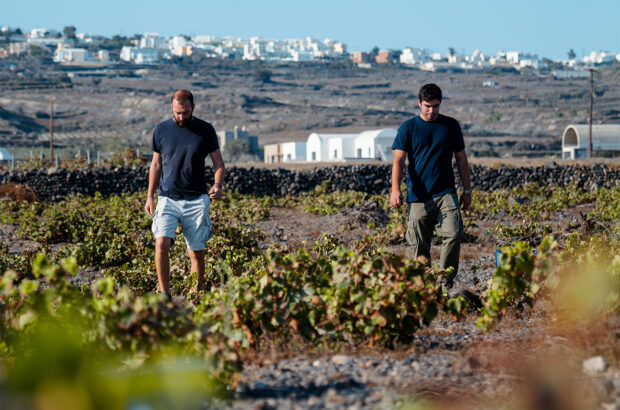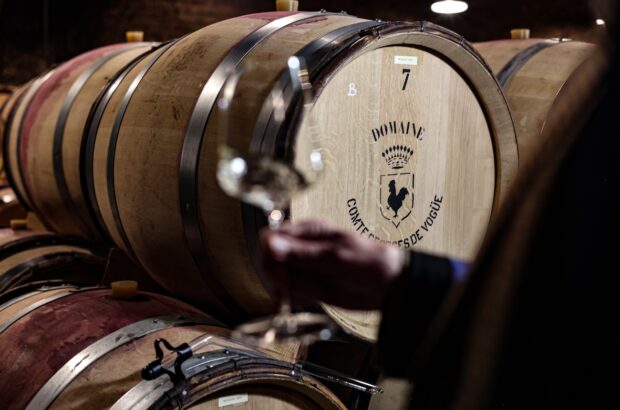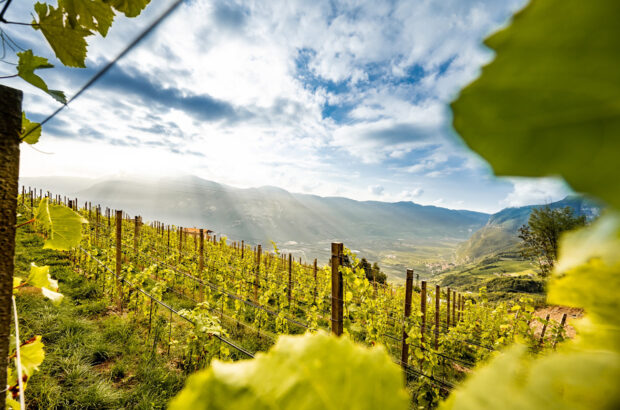The new frontier is coming of age. Look back 25 years ago and South Africa’s vast Swartland region was dismissed. The idea of fine wine being made in this hot, dry place, rolling with golden wheat fields, seemed absurd.
But a few brave producers broke through the boundaries set by the controlling regime of the time. Released to prospect new areas, they transformed the very face of South African winemaking.
Today, the appellation is just 100ha shy of Stellenbosch. Chenin Blanc and Syrah still make the finest wines, as they have historically, with the grapes dominating plantings. Pinotage is also notable, with lighter, new wave styles being made alongside more traditional bottles.
Farming is becoming progressively regenerative and climate-resilient grapes are being planted. While the potential of the Swartland’s diverse, ancient geology is being investigated like never before.
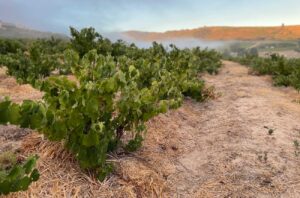
Chenin Blanc viness in the Plat’bos vineyard in Malmesbury
Mapping the Swartland
Eben Sadie of Sadie Family Wines and viticulturist Jaco Engelbrecht aren’t afraid to dig deep. With minimal financial backing, they have spent the past two years constructing a highly detailed map of the region, now available online.
‘It’s for the geeks,’ laughs Engelbrecht. They’ve identified up to 700 polygons – specific soil types or combinations delineated by boundaries – and condensed these into nine ‘soil introductions’.
‘What makes it unique is that we have simplified the complex geology and linked it to the effect on wine styles of the different areas,’ underlines Sadie.
The new map is available online in low resolution at Swartland Wine and Olive Route. High-resolution printed versions can be ordered from the Swartland Wine and Olive Route at R650 per map.
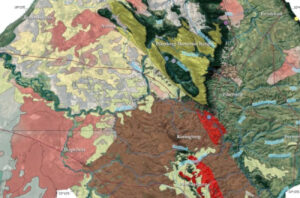
A section of the new Swartland geological map Credit: Jaco Engelbrecht for the Swartland Wine and Olive Route
Exploring St Helena
Swartland has seven official wards: Malmesbury, Paardeberg/Perdeberg, Paardeberg South, Piket-Bo-Berg, Porseleinberg, Riebeekberg and Riebeeksrivier. St Helena is an outlying satellite classified as WO Swartland, under the subregion Cape West Coast.
Sadie’s Skerpioen comes from here. So, understanding the potential, he and Engelbrecht embarked on a planting programme in 2019.
Currently there are 6.5ha of Chenin Blanc, Palomino, Vermentino, Verdejo, Assyrtiko, Bastardo do Castello, Grenache Blanc, Grenache Noir and Cinsault. ‘It’s a very dry area,’ admits Engelbrecht, though he cites the cooling Atlantic fog, underground aquifers and chalky limestone soils as factors that make it well suited to viticulture.
As an aside, Paardeberg neighbour Adi Badenhorst who makes his Sout van die Aarde Palomino from grapes planted here, has recently opened a Sherry ‘bodega’ in an old filling station in Saldanha, called The Saldanha Wine & Spirit Co, which doubles as an oyster bar.
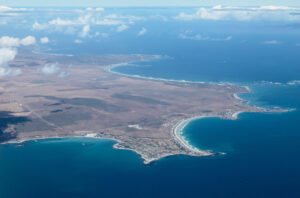
An aerial view of St Helena Bay Credit: mssulaiman / Alamy
Standout blends
Back to the Paardeberg for Sadie’s annual release tasting, which took place in his cathedral-like cellar, flanked with rows of concrete eggs. Recently built on their farm Rotsvas, the state-of-the-art winery serves as a reminder of how far Sadie, and the Swartland, have come. The next generation, sons Markus and Xander are part of the family business now too.
Sadie revealed that his flagship white blend, Palladius 2023 contains 25% of the West Coast fruit project. Alongside this, he introduced two new Mediterranean field blends from young vineyards on the farm, the red Sonvang and white Twiswind.
Parallel lines of thought took place in Riebeeksrivier, home to the Mullineux’s Roundstone farm. Andrea and Chris Mullineux are in the process of certifying Roundstone into ‘regenerative-organic’ – which will be a first for a South African winery. The project includes the release of two new Roundstone wines. While not traditional field blends, they are also a multi-variety mix of climate-resilient grapes.
Quality in Riebeeksrivier
Riebeeksrivier is nicknamed the ‘Côte’ for its band of prestigious producers, shale-rich soils and optimal western Kasteelberg slopes. As well as Mullineux, other notable producers here include Yellowwood Winery. While Rall Wines, Tim Hillock, and Lenuzza Wines make use of the Yellowwood cellar.
Anthonij Rupert’s Cape of Good Hope label focuses on single-parcel, heritage sites in Riebeeksrivier. Boekenhoutskloof owns Goldmine farm as well as the stand-alone Porseleinberg, home to the cult Syrah of the same name. Porseleinberg was made for 15 vintages by Callie Louw, succeeded now by Eben Meiring.
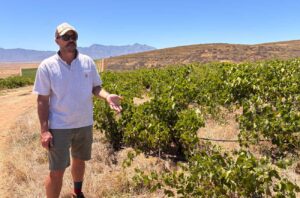
Callie Louw in the Porseleinberg vineyards, Swartland
Experimental wines
Closer to the central rural towns, there’s interest stirring in Riebeekberg. Kloovenburg is experimenting with Garnacha Peluda, called Hairy Grenache for its climate-busting hirsute leaves. While the historic co-op, Riebeek Valley Co has got hip with the times with its small-batch, old-vine experimental range RAAR: think skin-contact Chenins and carbonic Shiraz.
Down south in Malmesbury, the ambitious Leeuwenkuil Family Vineyards is the region’s southernmost farm. Its hyper-modern cellar is capable of producing high-volume, quality wines, with specialities being Chenin and Syrah.
Meanwhile nearby Klein Amoskuil is turning back time with over 20 buried qvevri employed in making its orange wines.
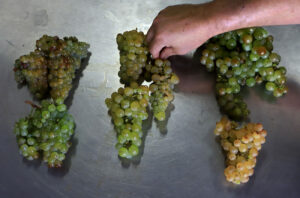
Swartland grape varieties: Chenin Blanc, Palomino, Cape Riesling and False Pedro Credit: David Silverman / Getty Images
Rebels and revolutions
From earth to sky. In the far north, natural wine proponent Johan ‘Stompie’ Meyer recently cut the ribbon on a new Wine of Origin, Piket-Bo-Berg. The lofty site is being dubbed ‘cool climate Swartland’ because of its 650m altitude. It can be up to 8℃ cooler which, unusually, has Meyer planting Chardonnay and Pinot.
What was that about absurd? Never underestimate the spirit of the Swartland.
‘Rebellious, irreverent and somehow deeply serious all at once,’ is how Andrea Mullineux describes it. This feeling distills into the bacchanalia that is the Swartland Revolution, having returned this year for its 15th anniversary.
Aptly titled Back to the Future, the event took shape as a hay bale maze in a Paardeberg field. Dubbed ‘The Straw Colosseum’ by Andrea, it hosted 350 people over two days. She was struck by the fact that it wasn’t nostalgia that coloured the event, but rather the future.
‘The next generation isn’t just coming, they’ve arrived,’ she says. ‘They’re building on what we started, but doing it in their own voice.’
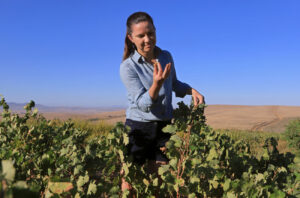
Andrea Mullineux Credit: David Silverman / Getty Images
Swartland at a glance
Size: 11,585ha, which equates to 13% of the national vineyard.
The Swartland is the fifth most-planted region in South Africa, but the largest in terms of surface area at approximately 999,000ha.
Top five grapes:
Chenin 2,332ha
Syrah 1,871ha
Cabernet Sauvignon 1,582ha
Pinotage 1,282ha
Sauvignon Blanc 1,053ha
Source: SAWIS


